If you’ve ever wondered how to choose the ideal running shoe and how it can impact your performance, let me tell you about the Tênis Test conducted at the CAFT – Center for Physical Assessment and Training.
I’m Fernanda May, a sports doctor and amateur athlete, passionate about mountaineering and, more recently, trail running. My love for running began in 2022, and my first major challenge was the El Cruce race, where I covered 100 km in three days across the challenging trails of Argentine Patagonia. Since then, I’ve fallen in love with the sport and have been dedicated to continuously improving. I have participated in various races in Brazil and South America, even making it to the podium in some, which has only fueled my desire to keep progressing.
To enhance my performance and correct aspects that might be limiting my potential, I decided to delve deeper into my technique and seek a comprehensive assessment. That’s why I went to CAFT, where I took the Tênis Test to better understand my deficiencies and adjust my training. In this article, I’ll share the process and the lessons learned from this experience – after all, choosing the right shoe can make a difference, but only when it fits the needs of each runner.
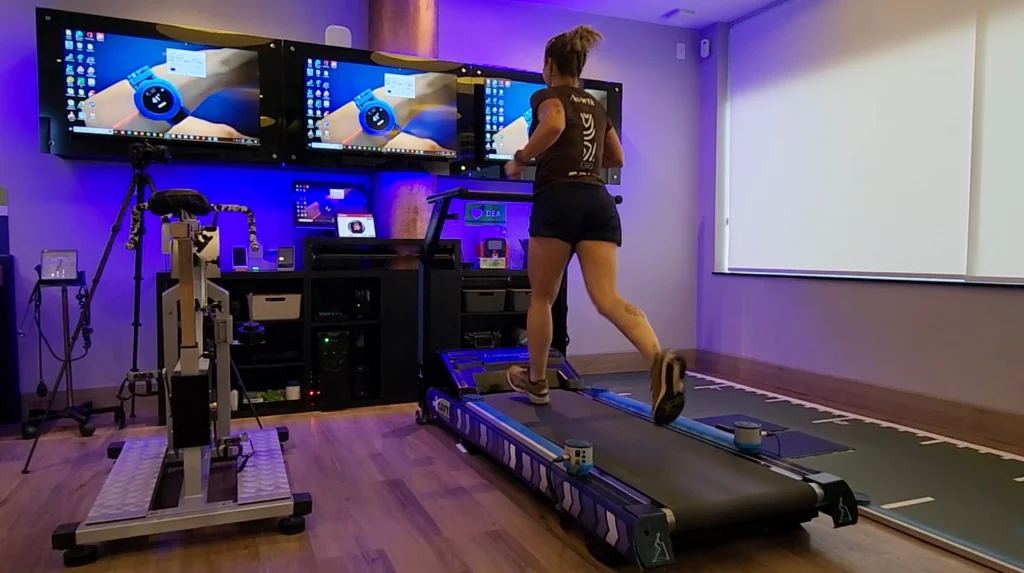
Objective of the Tênis Test
The Tênis Test aims to evaluate the interaction between the runner and the shoe, identifying which model best suits each person’s biomechanics.
Unlike traditional assessments, the Tênis Test proves that the “best shoe” is an individual matter, like a “Cinderella shoe” that must perfectly fit the characteristics and needs of each runner.
Additionally, it helps identify the runner’s deficiencies and which aspects they should work on to improve their performance.
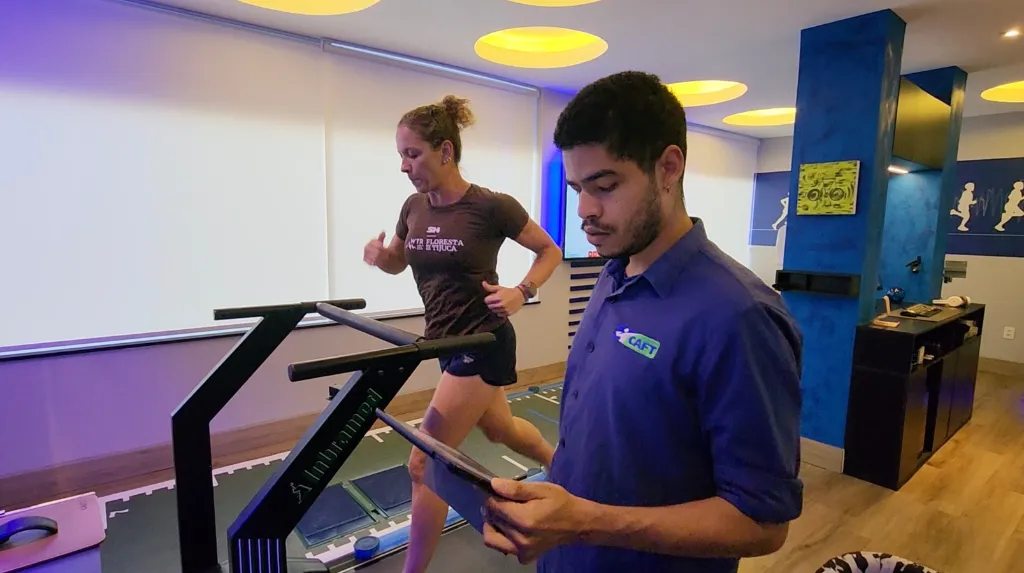
How is the Tênis Test conducted? (equipment used)
To conduct the Tênis Test, the CAFT team uses an advanced set of equipment that allows for precise biomechanical analysis of the athlete. Among the tools and methods used are:
- High-resolution accelerometer: placed in the pelvic region, this sensor measures kinematic and kinetic indicators during the run.
- Photoelectric sensors: 1-meter bars positioned on the sides of the treadmill to measure spatiotemporal indicators.
- High-resolution recordings: to complement the data, runs are recorded in high resolution, allowing the athlete and the team to visually review the technique.
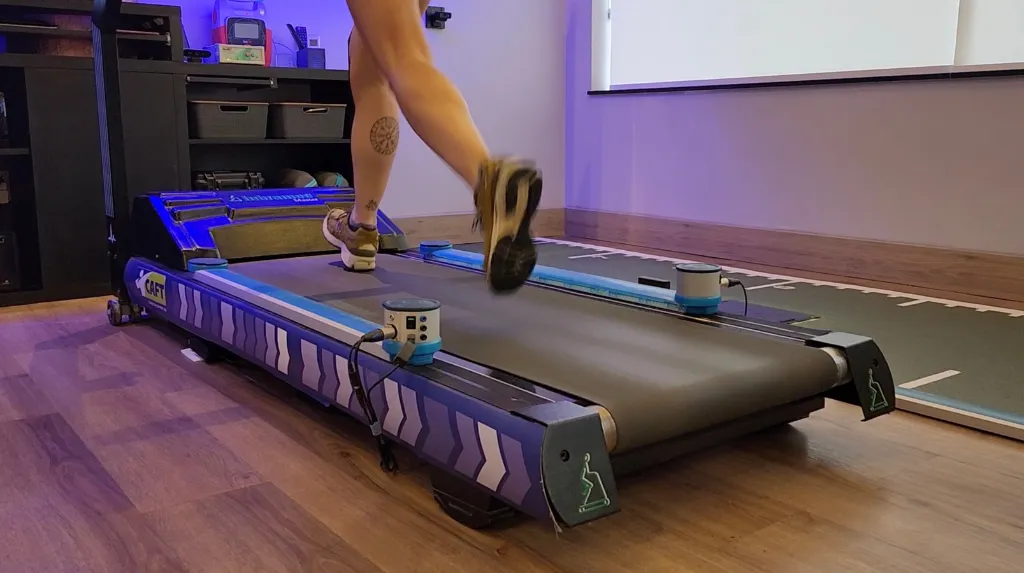
Parameters evaluated in the Tênis Test
In the Tênis Test, the goal is to assess the shoe in conjunction with the athlete, measuring how footwear characteristics—such as impact, stability, and symmetry—behave within the context of individual running dynamics.
Since the evaluation is personalized, both the shoe’s characteristics and the runner’s particularities are considered. The evaluated parameters are then correlated with indicators of efficiency and footwear suitability:
- Vertical Impact: measures the force the body receives with each step during the run. A shoe with good impact absorption can reduce joint stress, especially over long distances. However, even a model with excellent cushioning, such as the Hoka Speed Goat 5, may not be ideal for a runner whose technique places extra pressure on specific areas like the knees or hips.
- Dynamic Stability and Motor Control: dynamic stability mainly measures pelvic drop during running. Excessive drops can lead to trunk or lower limb compensations. For some runners, shoes with stabilization features can help minimize excessive hip drop.
- Symmetry Between Sides: indicates whether there is compensation in vertical impact indicators, impact duration, ground contact time, and dynamic hip stability.
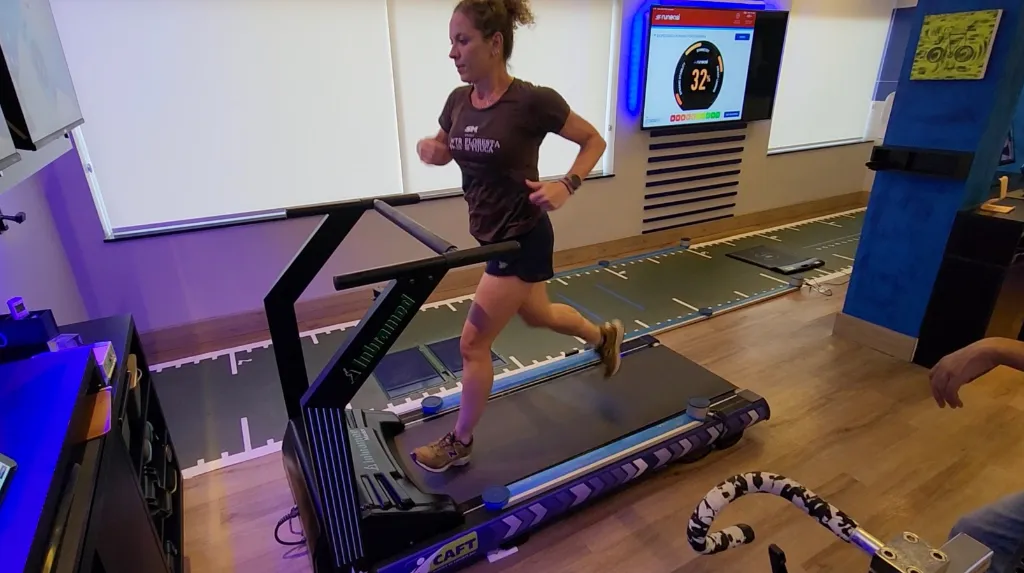
Final conclusions: choosing the ideal shoe and the role of mechanics
The results of the Tênis Test made it clear to me that the ideal running shoe depends not only on the shoe’s characteristics but also on each person’s individual biomechanics.
In my case, the tests indicated the need for adjustments in my technique and muscle strengthening to fully benefit from the chosen shoes, as none of them allowed me to reach the desired parameters. My ground contact time and asymmetry in the results were not related to the shoe but to deficiencies I need to work on. The rehabilitation plan suggested by CAFT focuses on improving my stability, symmetry, and strengthening specific muscle groups, aiming for continuous improvement in my running efficiency.
The biggest surprise was that the only shoe not specifically designed for trail running, even categorized as “lifestyle” – the New Balance 2002R – had the best impact absorption and overall efficiency for me. This demonstrates how individual characteristics are more decisive than the shoe model. However, it is important to highlight that using a non-trail-specific shoe is not recommended, as the lack of grip and proper upper can increase the risk of falls and injuries.
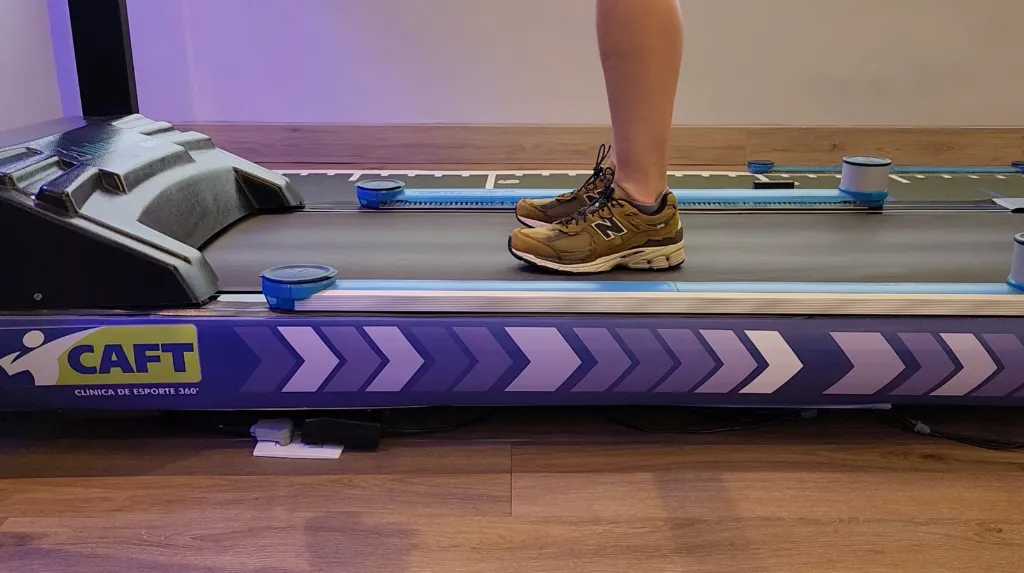
Combining the right training with the right shoe is undoubtedly the best way to improve performance and prevent injuries. However, working on running mechanics, specific muscle strengthening, stability, and force symmetry is what truly makes running more efficient and safe, making the shoe a contributing factor rather than the most important one.
This post is also available in: Português (Portuguese (Brazil)) Español (Spanish)
